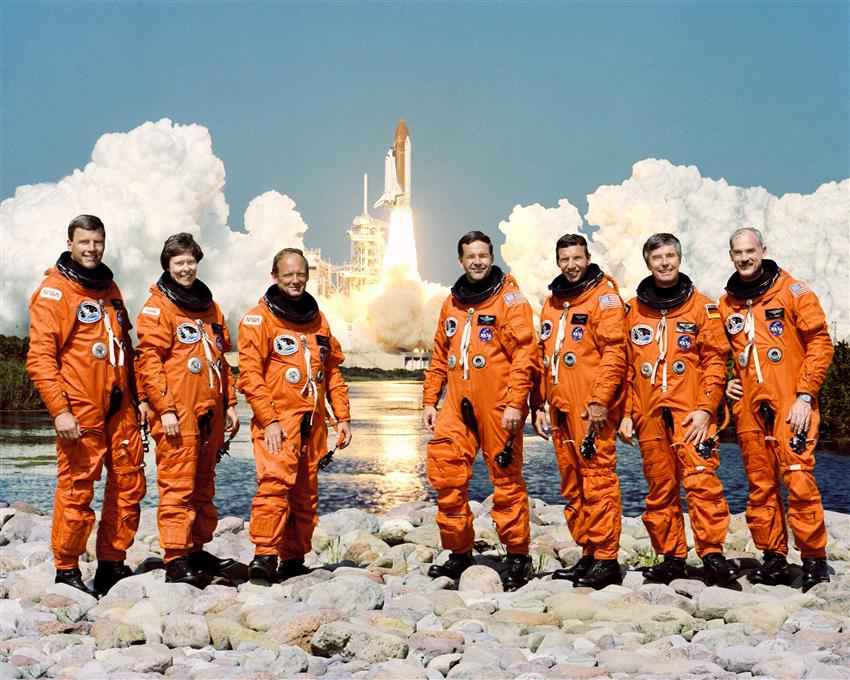Mission STS-42

Mission description

Text version
International Microgravity Laboratory 1 (IML-1) was the first in a series of Space Shuttle flights dedicated to fundamental materials and life sciences research. To commemorate Dr. Roberta Bondar's participation as a Payload Specialist in the mission, the Canadian Space Agency (CSA) issued a commemorative insignia for Dr. Bondar's flight suit.
The rod and serpents at the top of the crest represent Dr. Bondar's medical background as a neurologist. The red maple leaf, gradually transforming into the Space Shuttle, signifies Canada's significant partnership in the mission. Thirteen Canadian space physiology experiments were performed by the IML-1 crew during the mission.
The shuttle is shown in orbit above a green Earth, symbolic of the terrestrial application of space research. The three Great Lakes (left to right: Lake Superior, Lake Michigan and Lake Huron) represent the location of Dr. Bondar's hometown, Sault Ste. Marie, Ontario.
The design of the insignia was developed by Roberta Bondar and her sister Barbara Bondar and expresses Dr. Bondar's personal feelings toward concerning her mission. The artistic rendering was interpreted by Sault Ste. Marie science teacher and artist Susan Chow.
Patch STS-42. (Credit: Canadian Space Agency)
Launch
Date: January 22, 1992
Time: 9:52:33 a.m. EST
Site: Kennedy Space Center (KSC)
Landing
Date: January 30, 1992
Time: 8:07:17 a.m. PST
Site: Edwards Air Force Base
Mission duration: 8 days 1 h 14 min 44 s
Flight number: STS-42
Orbiter vehicle: Discovery
Payloads: Material and life sciences experiments
Dr. Roberta Bondar became Canada's second astronaut in space when she participated in the first International Microgravity Laboratory (IML-I) mission on board Space Shuttle Discovery. The laboratory was used on several shuttle flights, including but not limited to the IML series of missions.
Spacelab is a fully equipped space laboratory developed by the European Space Agency (ESA) as its contribution to the Space shuttle Program.
Spacelab has been used in previous shuttle flights, and will be used for the IML series as well as other scientific missions.
The STS-42 Mission featured experiments that focused on physiological changes in the weightless environment. Subjects of study included: eye motion and the inner ear; the elongation of the spine and back pain; energy expenditure during a spaceflight; the nervous system and changes in the balance system; the separation of certain kinds of molecules and cells from complex mixtures; and finally, the after-effects of spaceflight.

Mission STS-42 crew
From left to right. Stephen S. Oswald, Roberta L. Bondar, Norman E. Thagard, Ronald J. Grabe, David C. Hilmers, Ulf D. Merbold and William F. Readdy. (Credit: NASA)